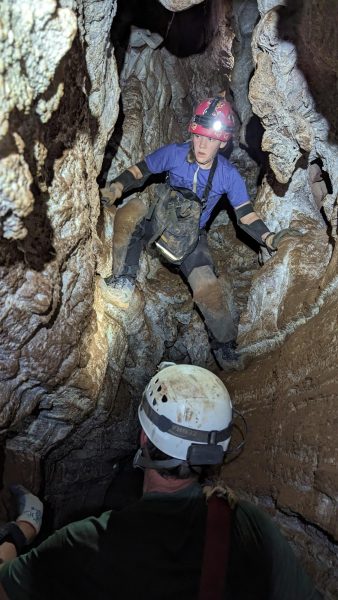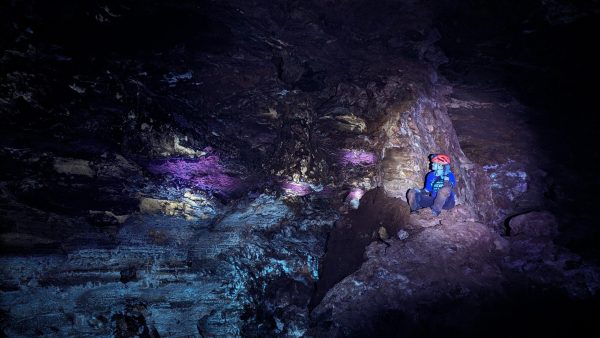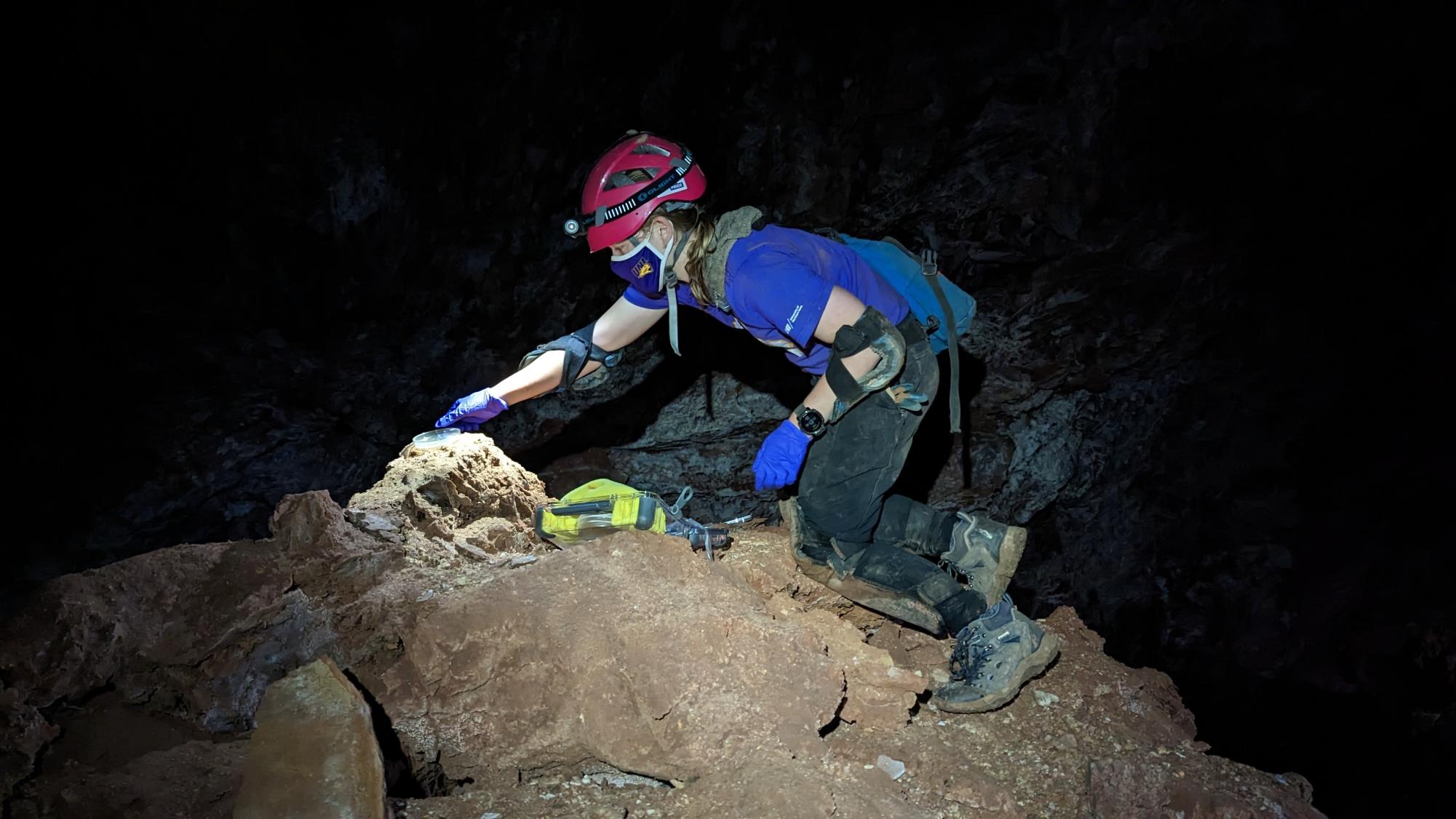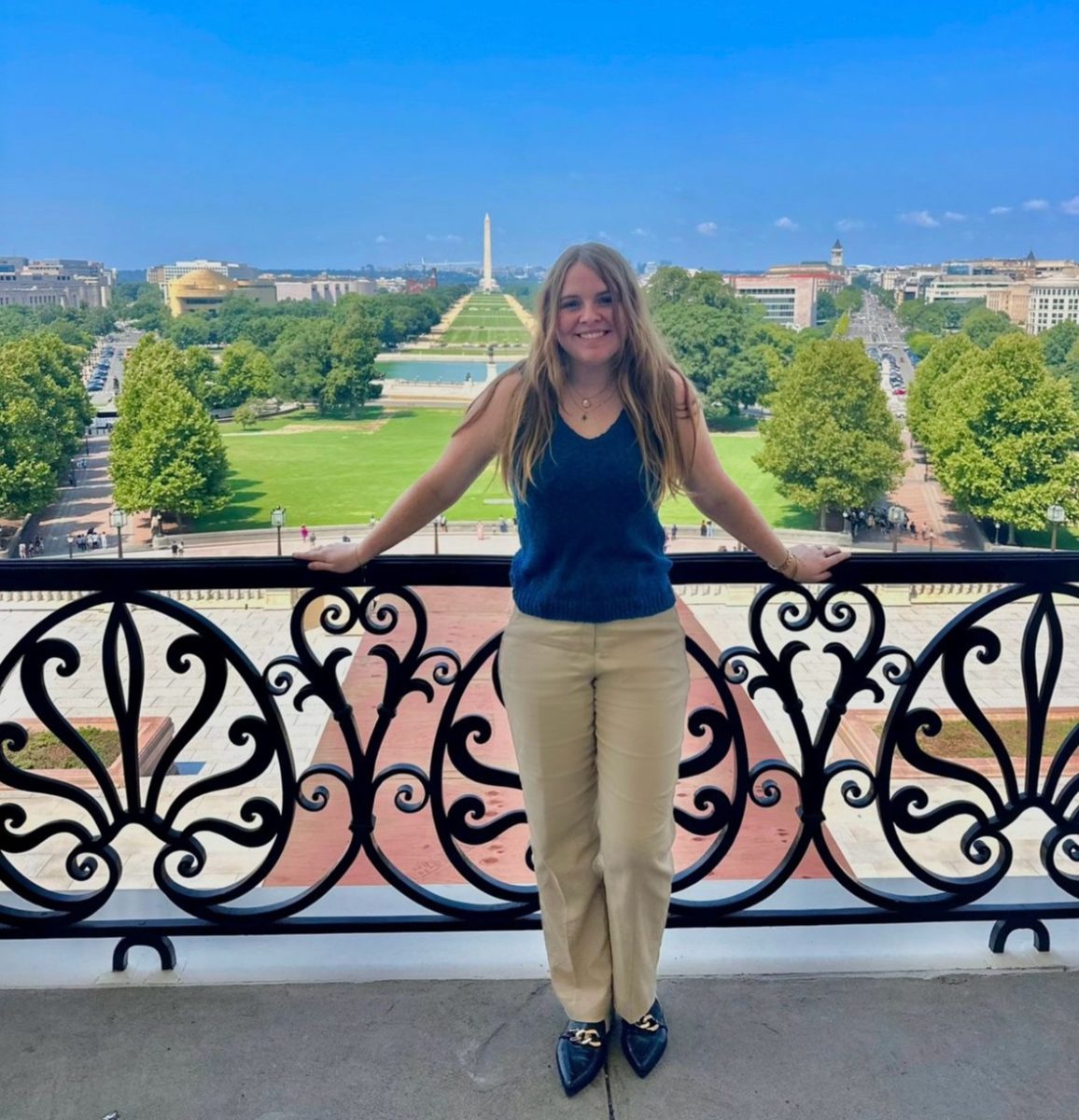Since 2021, UNI students and faculty conducting research that would help locate extraterrestrial life have been reaching new heights in science – by looking 600 feet underground.
As part of a $200,000 grant from the Iowa Space Grant Consortium (ISGC) and NASA, a team of UNI researchers are studying the isolated types of life that can be found in Wind Cave National Park, South Dakota, and the extreme subsurface conditions found there.
Faculty from four separate UNI departments and collaborators from Goddard Space Flight Center (GSFC) and NASA’s Jet Propulsion Laboratory (JPL) have teamed up and are currently undertaking three targeted projects, as well as the creation of documentaries and other digital content for public education.
The researchers hope to develop a deeper understanding of what conditions allow life to live in such extreme environments, and to use this newfound knowledge to understand how and where life might be outside of earth.

“In the deepest parts of the cave, down at the Lake District, we think might be an analog or a similar environment, to some of the caves in the icy moons of planets like Jupiter and Saturn in the solar system,” said Dr. Justin Peters, assistant professor of biochemistry.
Dr. Peters, along with Dr. Marek Sliwinski, professor of biology, have been tasked with the creation of a genetic map of the Wind Caves microbial system. They explore the caves and look for life to collect. They then take small samples off, coming back with more ideas and refined methods each trip.
“We just kind of dove in head first,” said Dr. Peters. “The National Park Service has gotten more and more comfortable with how dedicated we are and how conscientious we are of the environment.”
With this trust from the National Park Service, they’ve been able to go deeper into the caves, which in turn lets them find more interesting information.
“In some of the areas that we conducted research in, fewer than 20 people have been to due to its tight squeeze,” said Jacqueline Heggen, a biochemistry and biology double major at UNI. “One area, specifically, that the astrobiological underground team explored consisted of a nine inch squeeze that lasted an hour and a half. The squeeze was so tight that we had to take off our bags and push them above our heads.”
They’ve been able to determine what may be human contaminants, things that are more commonplace in the area, as well as the extremophiles—microscopic organisms—that live deep in the cave.
One such example is the information they’re finding about Pseudogymnoascus Destructans, a fungus that causes White Nose Syndrome in bats. This fungus is devastating bat populations across the U.S. and parts of Canada, making it harder for the bats to hibernate.
The UNI research team has been able to locate where this fungus is most commonly found, mostly the public tour routes, and turn that information into the National Park Service, so they can act appropriately to help protect the bats.
According to Dr. Peters and Heggen, the skills the teams have range from niche field skills to much more commonplace procedures, but that’s not to say there isn’t a physical aspect to the research either.
“One niche skill that helped in the caves was rock climbing,” said Heggen. “Gaining experience at the rock climbing wall at WRC helped underground to climb up and down boxwork chimneys and over chert breakdown.”
“In an isolated environment, there’s more factors to consider for safety,” she said. “Having trust within the team is mandatory to ensure the safety for everyone.”
The research has expanded to include Coldwater Cave, roughly 90 minutes from Cedar Falls. Wind Cave is a very unique environment on earth, which is why it was selected as the original subject of research for this project.
“The reason that Wind Cave was so attractive is that you can actually go 600 feet underground down to the lakes,” said Dr. Peters. “You’re touching an aquifer, right? It’s very rare on this planet to be able to get down to an aquifer directly.”
In the upper parts of the cave, the more surface level, bats, pack rats, and other small mammals are very common. As they get deeper into the cave, and close to the Lake District, they started seeing more single-celled organisms, which include bacteria, fungus and archaea, and they’re mapping them all.
This project is a five year long endeavor, and started in 2021. Because of this, there is turnover on every aspect of the project. As the initial students graduate, more jump in to fill the spaces. With roughly a year and half left, the project is approaching the tail end of the research.

According to Heggen, the project has a variety of incorporated aspects, meaning there isn’t just one major that checks every box. Because of this, freshman to seniors have gotten involved, encouraging all levels of education to join.
“We’re always looking for more people. If this topic fascinates you, come talk to me or my colleagues if you’re chemistry, biochemistry, or interested in the media aspect,” said Dr. Peters. “You could be a part of the team too.”













Korbyn • Sep 28, 2023 at 4:56 pm
this is so slay